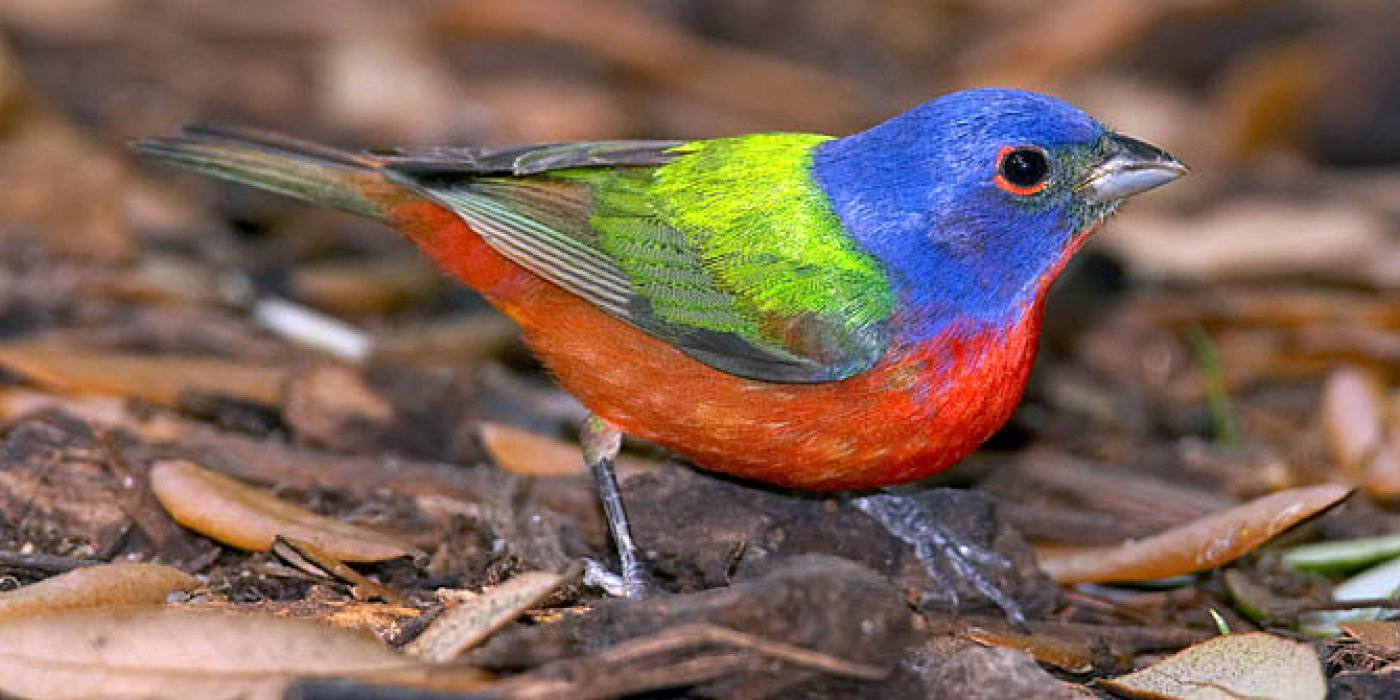Painted Bunting
Smithsonian Migratory Bird Center scientists track painted bunting migration routes using light-level geolocator tags.
Painted buntings (Passerina ciris) are an iconic but threatened species of the southeastern United States. However, despite their conspicuous habits, the basic ecology of and primary threats to southeastern painted buntings remain poorly understood, particularly the geographic linkages between specific breeding and winter populations. For example, basic information about key sites along the winter distribution of eastern painted buntings is incomplete. Outside of peninsular Florida, few field studies have investigated sites where wintering painted buntings spend a significant portion of the year, and historical accounts about the range, abundance and status are conflicting.
The research SMBC conducts will advance the conservation of this species by identifying key areas along migratory routes used by painted buntings and by engaging new partners across their annual cycle.
For example, Cuba is often considered the primary wintering location of this species, and several historical accounts indicate that it is relatively common in that country from November to March (Sykes et al. 2007). However, other accounts claim that painted buntings in Cuba are "rare," "not rare," "transient," "irregular" and "uncommon" (Sykes et al. 2007). Similar ambiguity exists in the Bahamas, where painted bunting have been described as "common," "an uncommon winter visitor," "readily found in winter" and "uncommon and transient" (Sykes et al. 2007).
Several sources also indicate that the species is common in Cuba and the Bahamas in spring and fall but rare during the winter, leading some researchers to speculate that some portion of individuals migrate through these countries on their way to an unknown winter site. However, no banded birds from the eastern population have ever been recaptured in Mexico, Central America or the Lesser Antilles. The poor state of understanding of the non-breeding distribution of eastern painted buntings has impeded the ability of conservation practitioners to link conservation will in the U.S. with conservation efforts in the Caribbean.
Without information about breeding and non-breeding distributions and migratory patterns, it is unlikely that effective conservation strategies can be designed to reverse painted bunting declines. For example, monitoring data from the North American Breeding Bird Survey indicate that more southern breeding populations have declined much faster than northern populations.
This variation suggests different exposure to threats among populations and indicates that management strategies should prioritize regions where southern breeding populations winter.
The tracking data from this project will fill several critical knowledge gaps needed to more effectively define conservation strategies for this species, including:
- Mapping key areas of the non-breeding distribution of southeastern painted buntings;
- Determining the relative importance of distinct wintering locations (e.g. Florida, Cuba and the Bahamas) for different breeding populations; and
- Quantifying the habitats used by painted buntings during the non-breeding period.











